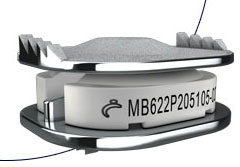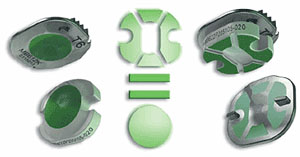Mobi-C
Mobi-C has the distinction of being the first second-generation artificial cervical disc to begin U.S. IDE trials.
It is commonly used to treat degenerative disc disease in the cervical spine. Its purpose is to restore normal biomechanical function after disc excision, provide pain relief, and at the same time avoid subsequent degeneration at adjacent levels.
• The mobile insert mobility favors the decrease the transmission of the constraints on the bone / implant interface (origin of dislocation), and reduces the constraints on the posterior facet joints.
• Preserves the future of the inferior and superior levels.
• Minimal thickness of the prosthesis plates.
• A complete range allowing a maximal coverage of the vertebral plate and the respect of the intersomatic height.
• Contact between the prosthesis plates is impossible.Mobi-C uses mobile-bearing technology and contained mobility for better replication of anatomical movements, providing a more natural range of mobility that includes six degrees of freedom. It also provides for one-step implantation, which simplifies the surgical technique. The approach is identical to a classical anterior cervical arthrodesis.
• The design of the prosthesis plates adapts itself perfectly to the anatomy of the vertebral plates. It requires no specific shaping of the vertebra.
• The anterior posterior positioning of the implant is controlled milimetrically, and can be adjusted post-operatively thanks to the stop on the implant holder.


